|
Your customer contact list is as important, if not more important, than your product. You worked hard, paid money, and spent time to build up your client list, and that list is extremely valuable to you for several reasons. Why should you build a contact list, and continue to market to the people on that list? 1. Past customers are easier to do business with again: If a customer has done business with you, they are likely to do so again. They will be easier to sell to again because they already know you, and hopefully, they like you. 2. Build a tribe of loyal followers and raving fans: Your tribe is made up of the people who love you. They are excited about what you have built and want to know about the new and exciting new things you create or the changes you might make with your business. Keeping in touch helps remind your tribe that you are an authority in your field. 3. Brand Loyalty: If you keep people engaged, you are more likely to get brand loyalty with past customers, so they don’t go do business with a competitor because they “forgot” you were in that business. There’s nothing worse than seeing your neighbor using a competitor because you didn’t continue to market to them. So, if you aren’t keeping a list of everyone you do business with, including anyone else who you have had a good interaction with, get on that today. Get a CRM now, and get going. Hubspot offers a free version that is easy to use and will get you on the path. See more here. You can also use Mailchimp for a simple email list. Whatever you do, do something to keep a list of your customers. Today, I am going to share a story of why this is so important. It’s a story of when I was able to create $1,000,000+ in sales in one day for a local small business. It had everything to do with understanding the power of branding and nurturing a customer list. I worked for a retail store in Henderson, NV that sold easy-to-play Lowery Organs. I mean the music kind of organs, not the body parts—shame on you! (pause for dramatic effect…) They had customers from all walks of life, but their primary focus was selling the hobby to senior citizens who wanted to be part of the music world, and loved the social aspect of taking lessons and learning to play on these machines. Each day we held classes where people would come to learn how to use their machines, and play songs. We would also hold concerts from time to time so they could play for each other, and we always had fun birthday parties which were just an excuse to get together, have a potluck, and play more music. It was a fun and fulfilling experience. It was also a great way for many of these seniors to be engaged in something fulfilling while seeing friends. The business model was that we would sell entry-level machines to seniors on a trial basis, and then, get them into classes. The classes were inexpensive and taught exclusively on the more complex and more expensive organs. Our job was to help people upgrade when they were ready to get a bigger machine. These machines were quite expensive, as many musical instruments often are, ranging in price from a couple thousand dollars, to upwards of $90,000 plus for the top-of-the-line machines. Each new version had extra bells and whistles that came in custom finishes of fine hardwood, and they were quite something to play. With a little bit of talent, you could really sound like a pro. When I was hired, the owner of the store told me he thought opening a store in Henderson would be a good idea because he had another successful business in St. George, UT, only a couple of hours away. However, it soon became a burden because he couldn’t get anyone to run the business properly, and he was losing money. He was sick of repeating a 4-hour drive down and back and wanted the store to run on its own. He made me an offer, and I accepted. When I got to work, I quickly realized this business had raving fans. These senior citizens were big fans of the product, the classes, and the lifestyle of learning to play an instrument. I had to brush up on my 1950s music, but I was quickly welcomed into the family. It was so much fun. After I got situated, my first item of business was to sort through the list of current and past customers. Luckily, they kept track of everyone and had them all in a spreadsheet. I made my plans to not only reactivate anyone who had quit coming to classes but to also clean up the list. One of the hardest parts of that business was that your best customers often came to the end of their lives. It was sad, and I attended too many funerals while I worked there. We cleaned up the list and had a good number of people on it, which we were going to start to nurture. I started a print, mailed newsletter. In it, we would do a history piece on a musician, or a call-out to anyone’s birthday that month for people on the list. We spotlighted one of the organs that was for sale and had other fun information as part of our newsletter. People instantly loved receiving it and would talk about it during their classes. I had 3 goals with this newsletter. One was to reactivate customers who might not be attending classes currently. The second was to tie everyone together with a piece of the culture they could participate in, and be part of. The third was to generate more referrals, interest, and overall engagement leading up to our big product reveals. Lowery, the parent company, would release new flagship top-of-the-line products every 4-6 years. I wanted to maximize opportunities for us to sell these new machines when they were launched a little more than one year later. My efforts paid off in each of my goal areas. We had more students, more excitement, and more fun happening every day. We started moving some of our used organs, which were much more price-friendly than the new models, and great for those on a limited budget. We were excited about the upcoming launch of the new product too. I knew this would help pull off a huge sales launch. The discipline it took for us to put this newsletter together every month was honestly a pain. It took time, $, and effort, but I knew it was going to work. Then the day arrived. The new machine was called the Lowery Prestige. It would cost $90,000 retail and was a beautiful machine. We announced its arrival in every class, in our newsletter, and planned a huge celebration launch party where we brought in a professional player who was sure to wow our audience. We made up special invitations for our top customers who were most likely to want to trade in their old models for a new one. At the same time, the owner of the store was preparing for the same launch at his store in St. George. He was excited because, after a few years of tough sales in the Henderson store, he was feeling the pinch financially. This launch was important. The day came, and our people all showed up. We had great attendance and people loved this new machine. It was such a cool machine and was beautiful. Everyone loved the concert put on by a flamboyant professional musician who resembled Elton John. He even had a sparkling jacket. He could play backward and forward and just made these instruments sing. It was great. After the concert, the sales conversations began. We met with everyone as they all enjoyed a meal. People loved the new product, and we sold 13 units that day. It was a $1,000,000 sales day! About half a million in cash and half a million in trade-ins. We were so excited. The next day, the more established and more seasoned store in St. George had the same event, but they only sold 9 units. I was ecstatic that we beat the main store, and the reason we did was because of the work we had been doing over the previous year. It was a major success. The owner was pleased and I felt vindicated because I had to constantly justify the expense and time it took to make these newsletters, and now, my plans had come to fruition. I was younger and much less experienced in marketing at that time, but I knew my plan would work, and it did. If you have a business that has return business possibilities, what are you doing to nurture your clients? Do they know you even exist, or were you just a company that did something for them one time? You should be nurturing your client list continually. You should be thinking about how to build up to large product launches, or new efforts. Speak to those you have done business with so they remember you, and you become part of their life.
You might be thinking, but Ryan, we are a plumber, or a car wash, or something else that a newsletter wouldn’t work for. My response is, do something. Keep in touch. Help people remember who you are and what you do. Send them a birthday coupon or gift. Give discounts to those who come back. Even car companies have loyal customer rebates they offer from time to time. This isn’t an instant result. The music store took more than a year to pay off, and they had a big list. It might take you longer. The discipline to make this happen is your key to success. You should be thinking of a way to keep people engaged and tuned in. You never know, it may turn into a $1,000,000 opportunity.
0 Comments
Not that often for me. Maybe only once or twice per month. Now, if you are a guy, this might seem about right, or you might think I’m a lightweight for thinking about it that rarely. If you’re a woman, you might think, what the heck?!? Why do you think about the Roman Empire so often, or at all, since high school history class? There is a funny trend around TikTok and Instagram right now where wives and girlfriends are asking their significant others how often they think about the Roman Empire, and the answers are almost universally,“I don’t know, not that often.” Then they ask, how often isn’t that often? “Maybe once or twice a week, or a month is all.” Then there are laughs and expressions of disbelief. “Why do you think about it so often?” Then the guy usually says something like, “It is an important part of history!” or “Men are warriors, we have to think about battle!” It is an entertaining watch, search it up on your favorite social video network. As my one-track mind often does, this trend made me think about marketing lessons. First of all, trends can be powerful tools for getting attention from a broad audience. Piggybacking on a trend relevant to your brand and story can get some great attention. My second thought was that I think about marketing every single day. For certain, way more than I think about the Roman Empire . I realize not everyone thinks about it that often, but we all have complex minds that have much to offer and we all have diverse interests and points of importance. My dad, for example, knows so much incredible detail about teams and individual athletes in most sports, with the possible exception of Soccer, but he probably knows about that too. On the other hand, I used to Google what sport was in season and read about some of the news about that sport when I would go to visit my parents, so I wouldn’t sound like a total failure of an only son to my dad. LOL. Luckily, he married my sisters off to lots of sports fanatics. When you are developing a marketing message, it is important to put yourself in the shoes of your WHO (target audience). If you can tap into their interests and worries, you can provide answers to their needs. For example, if your target audience is Women over the age of 50, you might find they think about age-related issues, or changes to their body and looks. Men aged 25-35 might be thinking about their career and advancement opportunities. Men aged 65 + might be thinking about how much the world has changed while they enjoy reminiscing about the old days when things were simpler. No matter your WHO, they have thoughts that many across that demographic likely share. A great marketer knows how to tap into the mind of their potential client. One of the most important ways to capture your clients’ attention is to know your WHY. Not the “Why” you’re in business, but WHY they do business with you. I often coach people to ask 5-10 of their clients why they’re doing business with you. This shouldn’t be your “friend clients,” but it should be your happy clients who aren’t so close to you that they will tell you what you want to hear. You need to get to the bottom of it. When you start to hear a consensus, you will be able to further define your messaging to capture the attention of your ideal client. Once you know your WHY, you can then build a sales funnel around that messaging. See Below. 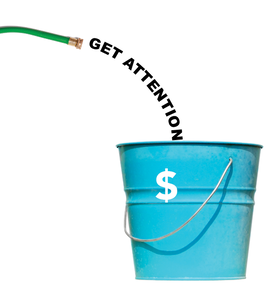 HERE ARE SOME IDEAS ON HOW TO GET ATTENTION Know your WHO (target audience). What are their interests? What are their pain points? What kind of content do they consume? What are their other interests? The better you understand your WHO, the better you can create content that will resonate with them. For example, if your WHO also enjoys motocross sports, you should be advertising at motocross events and in information sources for motocross. Be authentic. Be yourself and let your personality, and the personality you inject into your business, shine through in your marketing. Those who really are your WHO, will pay attention to what you have to say. Don’t try to be something or someone you aren’t. People will bond with you over sincerity and commonality with themselves. Tell stories. Often when I talk to business people they tell me that they don’t think people know their story. They feel like people don’t realize what they do and why, and especially, how good they are at it. The best way to help people know your story is to use your marketing to tell that story. People love stories, so find unique ways to tell your most impactful stories throughout your business and marketing. I have attended many volleyball tournaments with my kids. In Salt Lake City, there's a club called Club V. They are the biggest volleyball club in Utah. In their sports center, there are great big signs with the logos of all of the nearby colleges at the top. Underneath, they list each of the previous Club V players who have gone on to play at the college level. It is a very effective way to tell the story of how Club V can help you get to the next level of play. Create visual content. Visual content is more engaging than text alone, so use images, videos, and infographics, to break up your text and make it more visually appealing. This is especially effective if you can tell stories with your imagery like Club V. Use humor. Being funny can capture attention very effectively. Understand the sense of humor of your audience and target them specifically. It’s okay if you aren’t that funny, but a well-placed joke can help lighten the mood, and make your content more enjoyable to consume. Just be careful not to overdo it, as you don't want to come across as unprofessional. Ask questions. Asking questions is a great way to get your audience involved and thinking about your topic. It can also help to start conversations that generate engagement. It can also reveal the pain points your potential client may have. Make it easy to share your content. Include social sharing buttons on your website and blog posts to encourage your audience to share your content with their friends and followers. If something strikes a chord, people may share it, getting you free publicity. 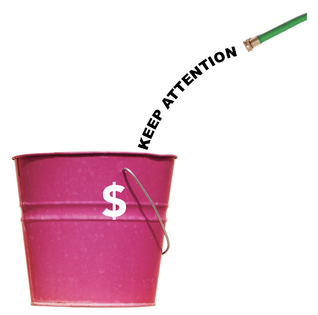 ONCE YOU HAVE ATTENTION, IT IS IMPORTANT TO KEEP ATTENTION Keep Track Your customer list is more important than your product. If I was buying a company, one of the first questions I would ask is how many people are on your customer list? Knowing who they are and having a way to communicate with them is crucial. Talk with them consistently It probably seems cliche, but you should have a newsletter. Print or digital, either way, keep in touch with your people. A local day spa here sends out a print newsletter every month that gets them lots of return business because it continually reminds people to come back, and what their specials are. Use your communication to tell stories Tell everyone about your most engaging stories, and request stories from past clients. Just like nurturing past clients for 5-star reviews, you should also nurture people to get their stories. These stories will be the motivation for your future messaging. Rewards Program.The reason all of your favorite restaurants have rewards programs is because they want to drop a reminder for you just at the right moment, so they can get you back to their restaurant. It is a great example of how to keep attention. It might not work exactly that way for your business, but think of some way to keep your current and past clients engaged. Your marketing is just as much about getting new clients as it is about keeping your client’s attention on you. I had a friend tell me one time that he purchased a company in a neighboring state. Because he had spent so much money on the acquisition, he felt it was important to cut back on his advertising spend in our local market. He assumed that since they had been in business for 20+ years, they would be just fine skipping some marketing for a while. Unfortunately, that didn’t work. Within a few months, their call volume had dropped like a rock. Once he put ads back in place, the most common comment he heard from his clients was, “I thought you had gone out of business.” Your fans are watching closely, your customers are watching vaguely, which is why they need constant nurturing. Interact with your audience. Respond to comments and questions, and participate in conversations on social media. Always respond to bad reviews. Never blame, always take responsibility if you messed up, but just make sure to respond and tell your side of the story. Finally, it's important to remember that there’s no one-size-fits-all approach to getting and keeping attention. What works for one audience may not work for another. Experiment with different strategies to see what works best for your target audience. Take it from a guy who thinks about the Roman Empire once or twice a month, but thinks about Marketing once or twice an hour, the number one goal of your marketing efforts is to Get and Keep Attention. I would love to hear about your experiences in effectively doing so. Next week, I am going to write about my $1mm sales day that came about 100% from a Keeping Attention approach. It was all sold to previous clients after a year of nurture. Stay tuned. One of my first jobs was selling Cutco Kitchen Knives. I thought that cutting the rope, leather, and penny were so cool, and I liked the quality of the product. Over the years, I eventually reached $3 million in career sales. That may seem like a lot, but it is actually pretty small in comparison to many Cutco greats. When it occasionally comes up with someone I meet that I sold Cutco, the person will sometimes say, “I sold Cutco too, but I only lasted two weeks”, or, “I tried that, but It didn’t work.” I like to respond with, yeah, I tried it too, I only sold $3 million worth of the stuff. People always seem stunned, I say it that way for effect when in fact, it isn’t that much. I know people who have made a wonderful career from selling Cutco, and some of them make more money than many doctors with less hassle. Some have sold hundreds of millions of dollars worth of Cutco products. I think our biggest failures come when we give up too soon. We sometimes don’t give things enough time to mature and succeed. Sometimes we quit right before we might have found success. I can promise you this, most of my successes have happened only after I have been tried and tested to the seeming limit of my sanity, strength, and patience. Napoleon Hill tells one of my favorite stories called 3 Feet From Gold quoted here
I always think of this story when my brain tells me that I have tried hard enough, and I want to quit. It also comes to mind when someone I know who is capable, decides to pull the plug on a dream. As a fellow dreamer, I know that some things don’t work out, but how many of those things didn’t work because we just didn’t fight through the challenges for long enough? In the case of Uncle Darby, he did learn from his mistakes. He went on to become one of the top earning life insurance sales people of his time. He paid back all of his family and reached his dreams, so the lesson wasn’t lost on him. This also applies when you try new things in your business. Stopping a new product, a new approach to selling, or even stopping marketing or advertising too early can be detrimental to your success. I had a client who recently fired me. She didn’t trust that I was doing what I said I was doing, and she wasn’t as savvy as some are regarding digital advertising and how it works. I didn’t do a good enough job helping her see what the work we did was accomplishing, or how it was progressing. I told her it would take 30-60 days to get the Google Ad campaign to produce results. She lost patience after one month. Everyone has different approaches and attitudes and levels of understanding, but I’ll be honest, I took this one personally because I really wanted to help this person succeed. It hurt. It also made me reflect on what I could have done better and what best practices are. I have been editing my book lately, and it’s been interesting seeing how often I say that any advertising campaign or marketing plan needs to be a long-term affair. It needs to be something you repeat over and over. Clearly, I believe my own advice because I say those words over and over in the book. It is true though. I think it is essential that you find marketing professionals who you trust to do a good job with your marketing. Once you make that decision though, make sure to give the plan time to mature and find success. Here is a link to my book, in case you are interested. The same goes for your ideas in general. If you have a successful business, you know you didn’t succeed overnight, and that it took time to master growing and running a successful business. If you are a new, struggling business owner, you are likely wondering what is wrong with you, why you aren’t succeeding at a greater rate than you are. It might just be a matter of time. You need to continue learning and growing, but over time you will get where you are going. I am not saying that everything you try is the right answer because it isn’t. I think mistakes are a valuable tool that will help you reach true success. One of my favorite sayings is, “You can’t get better, until you start somewhere.” My daughter recently received a bad review at her job. She was upset because she felt she did a good job, and I believe she actually does. She is young though, and sometimes, when we are learning to work and perform, we don’t realize where we might be falling short. At that moment, as she was dealing with the pain of feeling like a failure and feeling like she had disappointed her bosses, I asked her to ask herself this question: “Is there any truth to their feedback?” I told her if there is truth to the feedback then learn what you need to learn from the feedback and do better, even if the feedback wasn’t completely true or you feel they over exaggerated your shortcomings. If there is any truth to the feedback, then you should learn from it. Even when you deal with partial truths, you can still learn from your errors and perform better going forward. She still felt she was being mistreated. I told her if she analyzes her own performance and sees nothing wrong, she has to consider if she wants to continue working there. If the leadership is unhappy with her and she doesn’t change, she will likely lose her job. If she believes they are so inept and they can’t see her performance is actually exemplary, then she should consider leaving on her own accord. She opted to stay to try and find a way to meet their demands. So far so good. I had a leader teach me this principle years ago, and it is powerful. He taught me that when a leader has a problem employee and they do nothing about it, this will cause other problems in their organization. The other employees will assume one of two things. Either the leader is too clueless to realize the employee is a problem, or they know it but are too weak to do anything about it. Either way, the leader loses their influence with everyone because they don’t act on the clear problem in front of them. If you are dealing with failure, don’t run from it. Don’t blame anyone else around you, or the economy. Find the lessons you need to learn, and learn them. When we say, “I tried that, it didn’t work!” We are dismissing the valuable opportunity we have to learn and get better. Likewise if we are stuck in trying to analyze or plan the perfect business or opportunity, we are missing out. Start. Make Mistakes. Learn. This is one of the only ways to get where you want to go. Q & A:
Q: Why is it important to not give up too soon on a marketing or advertising campaign?
Q: What are tips for avoiding giving up too soon on a marketing or advertising campaign?
Q: What are the leadership qualities that are important in your business?
Q: What are some examples of people who have achieved success despite giving up early?
Good luck out there, and if you are going to try something, give it everything you have and then keep going. Once you are down and out, stand up and go again. If you truly can’t go any further, learn the lessons you need for your next adventure. I have a friend Lance Brown, a speaker and educator, who taught me about this great quote from one of the founders of the Franklin Covey company, Hyrum W. Smith. “Character: The ability to carry out a worthy decision after the emotion of making that decision has passed.”  If you're a small business owner or an entrepreneur, you have a burning question: How fast do I want to grow? Kristy Pack, owner of Pack Tax, had the same question. After seeking advice from a notable mentor previously unknown to her, she tackled the task with a multi-layered, local marketing strategy. She made the decision to spend what seemed like a fortune on marketing her business. The result? A million-dollar-plus business. How to View Your Marketing Spend Kristy had the desire to grow her tax filing business very quickly to replace her husband's income after he had been laid off. She had worked in tax preparation for many years but wanted to create something unique and powerful. One mentor she talked to told her he had grown his tax prep business over 10 years. She wanted to do it in just a few. What was the answer to doing that? 1. A Great Product. 2. Get Help From Mentors. 3. Spend Money On Marketing. 4. Rinse and Repeat. It was scary when she decided to spend $20,000 on marketing. Kristy had invested everything to start this business, and she needed quick growth. She viewed marketing as an investment, not an expense. She paid attention to what worked and continued to spend on what returned best for her. She knew she had a good idea. She knew people needed the service. She just needed people to know she existed. So, she made the decision to aggressively market to her local community, and she was able to grow her business very quickly. Kristy’s business surpassed $1 million in revenue in her 5th year. ROI: What You Get for $20,000 A $20,000+ marketing investment isn't just about throwing money into advertisements; it's about strategizing for the highest Return on Investment (ROI). By focusing on multiple marketing channels, from local premium placement print, networking, direct mail, and local sponsorship, Kristy established her brand in the local market. She has not focused on SEO, SEM, or social media, giving her a great opportunity to continue her meteoric growth. If you spend wisely and effectively execute a Strategic Marketing Plan, you can expect a positive ROI. The Power of a Mentor in Your Business and Marketing Journey Kristy credited much of her success to her mentors. She was brave enough to ask for help. She talked to a family member and a friend who also had a tax preparation firm in different areas. They helped her navigate setting up her company. She also contacted a previously unknown successful local business owner in North Ogden to ask for help with how to market her company. Sometimes, we ask for advice from friends. Although they probably mean well, they likely aren’t skilled in what you are trying to accomplish. It is much wiser to find someone who is willing to speak to you about what they have built. Don’t be shy, but also respect the time of a busy fellow business owner. Don’t get greedy with their time. What a Mentor Can Teach You Kristy didn’t know anything about running a business, so she decided to ask a local, successful business owner to help her with a plan to grow her business. Her mentor told her what the best solutions have been for her business, and helped Kristy choose the right marketing channels and to understand her target audience. Kristy followed the advice even though the investment seemed huge at the time, and it has been instrumental in growing Pack Tax—a mentor's advice can be priceless. I have had some incredible mentors as I have grown my business. One was Rhett Long, who is now a good friend. Previously, as the publisher of the Standard-Examiner, he was a competitor. He also ran a company with 50 magazines and spent years in both the traditional and digital marketing worlds. I asked him for help after he retired, and he helped me for 3 years at no charge. I now consider him to be one of my best friends, but I didn’t go into the relationship expecting the level of help and friendship that would come out of it. I also offered to pay on multiple occasions, which he always graciously refused. Marketing Channels: Where to Put Your Money Choosing the right marketing channels is critical. Kristy utilized a multi-channel approach. But, surprisingly, Kristy wasn’t very tech-savvy, so she used non-tech solutions at first. But, the biggest key for any business is making a plan, and knowing where your WHO spends their time, and WHY they’re doing business with you so that they will pay attention. We are happy to help you with a plan if you want help. We have always taken the approach of giving free advice to anyone because we believe it will come back to us in future advertising revenue. We have a cool tool called a recommendation engine. It helps us with marketing research, so we know where a client should focus their marketing budget. It’s a great tool, and we’d be happy to see what it suggests for your company. Contact us here. Here are some thoughts on where to focus your marketing efforts.SEO and SEM: The Active Search King As the backbone of online visibility, Search Engine Optimization (SEO) and Search Engine Marketing (SEM) are the yellow pages of modern times. They help your business show up where people are looking for you, making both techniques crucial for online success. Properly executed, they drive both organic and paid traffic to your website. Social Media Marketing: The Passive Discovery Tool Building a strong social media presence can boost your brand's visibility and customer engagement. This type of passive discovery helps land customers who weren’t previously looking for your product or service and also helps people remember your brand when they do eventually need you. Local Advertising: Don't Ignore the Power of Community Kristy's mentor emphasized the importance of local advertising because a strong local presence can be a cornerstone for growth. Her mentor also told her to get on the cover of local magazines, like Connection Publishing, and to become part of community events like parades and markets. Kristy did all of those things to establish her brand in the local community in a very short period of time. Reinvesting in Marketing: The Plan for Growth Marketing is not a one-time investment. It should be a part of your budget for the long haul. By investing in marketing, Kristy created a cycle of growth. The ROI from initial investments fueled further marketing campaigns, which fueled even more growth. The Rule of 40% in Reinvestment. It all depends on how quickly you want to grow. If you want to grow aggressively, you should spend more on marketing. One popular strategy is to invest 40% of your profits into marketing. This strategy often provides a good balance between taking profits and fuelling future growth. Measuring Success: KPIs You Should Monitor It's vital to measure the success of your marketing strategies. Key Performance Indicators (KPIs) like customer engagement rates, ROI, and conversion rates provide invaluable insights. Kristy reevaluates her marketing each year as a way to determine where she wants to continue, and what needs to change. It’s all based on ROI. If she spends $1000, will it come back as $2000, or more? The Million-Dollar Question - Would You Invest $20,000+ in Marketing? So, we're back to our initial question: How fast do you want to grow? Would you invest $20,000+ in marketing a year to help you build a million-dollar business? Kristy Pack did, and her strategy paid off. But she didn't do it alone. By utilizing a local marketing strategy, seeking mentorship, and continuously adapting, Kristy Pack turned her investment into a million-dollar business. If you're serious about business growth, perhaps it's time you considered doing the same. Connection Publishing reps are here to help with the marketing side of things. We are happy to help you develop a plan for growth. One More Thing...Unlocking the Secrets of Marketing Your Business. My 10-week course on creating the business of your dreams through marketing excellence is coming up September 13th. Sign up now for the course here. I will help you make the right decisions to grow and market your business. You can also get 40% off through the Utah Custom Fit Reimbursement program. See more info here.
I walked to the mailbox today and there was a nice-looking card envelope mixed in with the junk mail. I opened it and to my surprise, I found a handwritten note from a competitor of mine. Well, that isn’t entirely true, but it is… Let me explain. A little over a year ago, I attended a Chamber of Commerce after-hours event, called Business After Hours. One of my friends looked across the room and said, “Oh, look, that’s the Hometown Values rep.” I turned and there was a tall woman surrounded by friends. You see, Hometown Values is one of my main competitors. I will tell that story in a minute, but just know they’re the 800 lb. gorilla in Utah. They have been around for nearly 30 years, and they publish over 500,000 magazines every month. To be honest, I initially felt some irritation and intimidation because it's hard to see your competition working the same room you are, if you know what I mean. Especially one who’s apparently popular and garnering lots of attention. However, one of the philosophies I try to live by is to make friends with those who intimidate me. I also try to be competitive and not cutthroat in my work. I took those feelings I was having and released them and made the decision to be brave and go meet her. I watched for a break and introduced myself. She gave me a look that meant she knew who I was and was feeling some of the same feelings. However, we visited and had a simple conversation. I had tackled my demon and made friends with the “enemy.” Mission accomplished. Starting Something NewSeven years ago, Melissa and I started Connection Publishing, a local magazine publishing company. Our first magazine was small and hyper-local to North Ogden. We went to 12,000 homes, which is almost nothing in the grand scheme of direct mail publications. We did good work and had a unique niche that other cities soon found out about. Many asked us to come help them with similar products. We quickly grew to 5 publications. Over the years, I have met several people from Hometown Values, and other competitors. One of the hardest things we faced as a new business was the main Hometown Values salesperson in our area decided to launch a competing magazine with one of her best advertisers the exact month we started ours and in the exact same city. That made things extra hard to start, but what's a good story without some ups and downs to overcome? Eventually, we survived, and the other new magazine didn’t. Even though I had felt those same feelings of resentment towards those competitors, I actually became friends with them in the end. It isn’t always easy to be friendly towards someone you feel threatened by, but when you do, you will feel very empowered. You will also realize that you have way more in common with your competitors than you realize, and often, you’ll be able to help one another. The previous Hometown rep has since referred several people to us after she got out of the business. I consider that a big win for us, as she could have referred them anywhere, but she chose us even after several years of tough competition. I was still intimidated by the largest and most successful magazine company in the State of Utah. So, to become friends with their area representative was a big step for me. We later met again at other chamber events, and we served together on a committee. We became better friends. If you have followed along with my writing, you know that I also decided to buy a business with my son. We purchased a Roof Maxx dealership that he runs. Our territory is large. Probably 150,000 or more homes, and we, Connection Publishing, mail to about a third of them. We advertise in our own magazines, because, well, I know a guy, and we do very well with those ads. Because of the success we have had in our magazines, I made the decision to advertise in Hometown Values, our competitor, in the areas we don’t cover with our magazines. I called Jade and she was happy, but surprised, that I wanted to advertise. In fact, at first, she told me she might put the advertising order in my son’s name just to keep it somewhat anonymous. I told her, no problem. It didn’t matter to me. I knew that Hometown Values is a successful magazine and that many of its advertisers have gotten good results from the magazines for years. So, I felt it would be good for our business, and it has been. Yes, I will admit it, our competitor has a good product. We are uniquely different, but that isn’t the point of this article. Today, this card showed up and its details are being shared with permission. In it, Jade, the Hometown representative, was very kind. She thanked me for advertising and also told me it caused some surprise at her agency when they found out it was their competitor who was buying advertising from them. This made me smile. Even though it is for a different business, it is probably an odd occurrence. I like being surprising sometimes, so it felt good to be this kind of surprising. She also thanked me for my friendship and mentorship, saying she has learned from me. I am glad to help. CompetitorsR Marketing Dept. is another competitor. I went to a networking event 6 years ago and met a man who owned a marketing company. He was very successful. He had huge success as the VP of Marketing for a huge international company operating locally. He retired from that company to start his own marketing firm, and he’s extremely well-known. Everyone I talked to wanted me to meet Steve. They all talked about how he’s the best marketer they knew. They were right, he is incredible. Steve has been a huge supporter of me and our company from the very beginning. He loves our magazines and has not only advertised himself in them, he’s also referred business to us. Thank you, Steve! As the market changed and printing costs increased 68% in 2022, we had to introduce new products, which meant moving into more of a competitor's role with R-Marketing, Steve’s company. I worried about this, not wanting to lose my friendship with Steve. Not only has he been a friend to me, he is also a mentor. I have learned so much from him. I would never do anything to hurt him or his business, so this was a bit of an uncomfortable position. Not only has Steve been extremely supportive of the changes I have made, but he also invited me to be part of a Mastermind group with some of his best clients and friends. This exclusive group gets together 2x per month and we discuss our businesses and how to best grow and succeed. Steve not only didn’t get angry that our businesses crossed over more than before, but he invited me in even closer. He is an educator and uses courses to teach his clients and potential clients to market more effectively. These classes are excellent and I have attended them 2x. Highly recommended! Here is the link if you are curious: https://rmarketingdept.com/business-growth-blitz/ I have always loved teaching, and I’ve known that someday, I would create a course and teach classes similar to how Steve teaches. I knew before I ever met Steve. When I knew it was time for me to take on the role of course instructor, I approached Steve and asked him if he would be OK if I started teaching classes as well. We have different styles and different content although much of it overlaps. I will tell you though, if you really want to be an expert marketer, you should attend both of our courses. I was nervous Steve would be frustrated with me for starting my own course, but surprisingly, he wasn’t. He expressed to me directly that he was OK with it, and wanted to support me. That was classy! I was so grateful because I knew this was how I needed to grow my business, but I did not want to affect my friendship with Steve. I’ve always felt people are more important than money. ClassinessWhat Jade did in sending that note was classy. I have to be honest, I went to school on it. I will definitely be using the personal card approach going forward, (Thanks for the great idea, Jade!). What Steve did is also classy. It’s stepping beyond the arena, beyond competition, and into friendship. You don’t always have to be friends with your competitors, and you don’t need to view them as the enemy. It’s classy when you can show respect for your competitors.
In fact, you might learn something from them. I think it is important to pay attention to your competitors. When they do something good, you can do something similar. Don’t ever copy them blatantly, but use their example as inspiration to come up with something to stay competitive. You can also learn from them when they mess up. Learn from their mistakes, and do better. When we first started, some of our competition would do what I felt were strange things, things that weren't customer-centric. I learned from that, and now we handle things differently. For example, some companies wouldn’t share their advertising designs with their customers to prevent them from using them elsewhere. I made the decision we would share ads we made freely. It’s cool because we often go into advertiser’s businesses, and they have the ad we made for them printed out and hanging in their offices. And yes, sometimes they use them elsewhere. It’s better for the client, so it’s better for us. Those are my thoughts this week. Be competitive, not cutthroat. Support your competition when you can. Be inspired and motivated by your competition. As I mentioned earlier, my course is coming up. You will find the link below. This is the culmination of my life's work and study, becoming an expert at marketing companies and selling products. In this 10-week course, I plan to change the lives of those attending. It not only features lessons that will teach and inspire better marketing and business practices, it will provide you with hands-on, applicable tools you can use in your business. Many business owners tell me marketing is one of the most challenging pieces of running their business. In my course, we will unlock the secrets of effective marketing. We will make things easier, clearer, and more powerful, so you can take your business to the next level. Don’t miss the early-bird pricing, which ends next week. Let’s make things take off for your business. My course, https://www.connectionpub.com/10weekcourse2.html 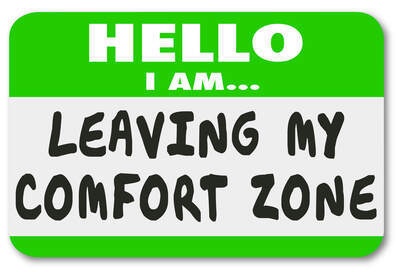 To do anything truly great, you must do great things, and then tell everyone about it. This is where most people get stuck. They work hard, develop something great, and work every day to perfect their creation. The problem is, it’s often hard to let people know what you’re doing. It is hard to put yourself out there and to shout from the rooftops about what you are doing and what you have created. Even if you have told some people, it might feel like you are screaming into the void, now one is hearing you. Getting the word out is tricky, but there is a way to do it. For my primary clients, local small business owners, there are some things you can do to build a reputation and to become well known. There is a strength to being well known. It might make you uncomfortable doing some of these things, but as the great Steve Harvey says, “You have to get comfortable, being uncomfortable!” If you stay in your bubble, and you don’t tell people about your creation, you are not going to be successful. I am going to tell you step-by-step how to get out of your bubble. How to get out in the world to get the attention you deserve. The better you become at this process the more success you will find. You can have a great impact on the world with the work you do, but only if people know that you do it, because there are compelling reasons why they should trust YOU to do it for them. Step 1: Do Good Work!Dan Kennedy says, “Good is good enough, next!” Too many perfectionists make the mistake of thinking that they are going to get their product or service perfect before putting it into the world, and asking money for it. This is a major success blocker. Don’t get me wrong, you must make something GOOD! But good is good enough to start. Get it good, and then get it out there. Once you receive feedback, you can adjust and improve. When we first launched our magazines, we had a great designer and I had sold advertising in a different magazine, but we didn’t have a background in publishing magazines…yet. We pushed forward and published our first issue. Melissa and I were literally scared to death.I remember we were physically shaking when we wrote the check to pay for the printing and postage in order to send our first issue to nearly 12,000 homes. Melissa nearly had a nervous breakdown. She was so worried because she had never put herself out there like that. Today, we kind of feel like Juni and Carmen in the second Spy Kids movie. It was thoroughly scary when we first jumped off that cliff, but now that we’ve been falling for a long time it isn’t as scary. We made plenty of errors in that magazine and countless since, but now, the overwhelming feedback is, “Wow, these are so professional, you must have a background in publishing.” We don’t, but we followed one of my favorite mantras; “FEEL THE FEAR, AND DO IT ANYWAY!” It doesn’t matter what type of business you’re in, plumber, accountant, restaurant, retail, or construction, but you first need to create something good, or be good at your trade. Not perfect! Good is good enough. Step 2: Become an Authority (Expert)When I first started putting myself out there as a marketing expert, the negative voice in the back of my head was constantly saying, you don’t know enough to be an expert. You should add years of additional study before claiming any sort of expertise. I was able to realize I didn’t need to be perfect or be the best in the world, I just needed to have some mastery of my subject. When I need electrical work done, I talk to my friends, or a trusted professional. They might not know everything, but they know so much more than I do. If I need help with a car problem, again, friends or experts are the authority I turn to. To be an expert, you need to have above average understanding of your subject matter. I have loved learning and studying marketing over the years. I read books, and blogs, I watch YouTube videos and listen to podcasts. I attend conferences. I spend my free time, (not all of it), learning about my trade. I have for most of my life. If you know your WHY, you will feel that way about your industry. If you don’t feel that way, consider doing something else. I noticed even though I still have so much more to learn about advertising small businesses, people are turning to me for guidance about their advertising. They ask me questions. I don’t know everything, but I know enough. I still study, I still learn, but I am now the electrician in my field. I know more than the average person. Step 3. Yell it From the Rooftops Now that you’ve accepted your role as a leading authority, it’s time to tell people about it. Last year when we made the decision to pivot our publishing business into a full-fledged marketing firm, we had to get the word out. In the marketing world, we were known as print marketers. We made magazines. We didn’t do marketing. Some of my clients knew I had a knack for marketing and often came to me for advice, but we hadn’t established ourselves as experts in the field. Simultaneously, I launched a business with my son, Koby. We bought a Roof Maxx dealership that he runs. I do all of his marketing and we have had great success right from the beginning. I remember looking at the growing success of that business and the marketing I was doing, and thinking, I should help my clients do stuff like this. That thought led me to make the decision to change Connection Publishing into Connection Media Co.,and to become a marketing firm dedicated to helping local small businesses thrive with powerful marketing. In order to let people know that we were changing, I started making the rounds to all the networking meetings I could find. I also started a YouTube channel, and began teaching micro-lessons on marketing. I also started my podcast, and started interviewing my clients who were successful local business owners. I started volunteering to speak at local chambers of commerce. I even started taking paid speaking gigs. I also put on local free seminars detailing tips for local business owners on how to better market their companies. I continued to work on tools people can use to market their companies better, easier, and more effectively. We advertise these things in our publications, on social media, and I write this blog in order to better perform on search engines. This all started about 10 months ago, and it continues today. We are yelling from the rooftops, letting everyone know what we do, and how we do it. What’s interesting now is the number of people coming to me saying things like,”You’re a marketing guy, can you help me with this?” or “You’re a marketing guru, what do you think about this?” “You should call Ryan, he is good at marketing!” These types of comments never happened before. I got calls from writers and graphic designers because I was the magazine guy. I didn’t get calls from people wanting info on marketing. Even though it was a skill I already developed, no one knew about it. This is an uncomfortable position. Constantly talking about myself and pushing for the attention I need to sell our products, and to be seen as an authority, is uncomfortable. I am actually an introvert by nature. But I have worked my whole career in out-reaching types of sales positions. I force myself to go out and meet new people, to make friends, and make sales. I am comfortable with it now, but I still wish I could hide in the background instead of being the center of attention. However, I don’t think you can do great things unless you reach many people. You can’t reach many people if you don’t master your skills, and then tell everyone about it. This is the essence of marketing. You can use masterful marketing to sell sub-par products, but when you master both your product and your marketing, you can change the world. Step 4: Get Better Over TimeThe final step is to be in a state of constant improvement. Just like in my Strategic 5-Step Marketing plan, the final step is to analyze and adjust your advertising, your business should do the same. Find ways to better serve your WHO. Continue your education, continue to interact with people who are more expert than you. Give yourself the opportunity to improve and expand your expertise, and then continue to tell everyone about it. Fresh energy is crucial in all parts of your business. Your website will be dinged by Google if you don’t consistently add new content because no one wants to read a story from 2015 about how to fix your clogged drain when there is one from 2023. Errors and mistakes are great ways to learn what you need to improve. Bottlenecks are also a great way to improve efficiency. We are starting a new process at Connection Media Co. where we have a bottleneck check in our leaders meeting. This gives us a chance to decide what changes need to be made to our processes, so we can operate at peak efficiency. We also have a monthly brainstorming session where we talk about our Creative for the coming months. We open it to all of our writers and designers to gather ideas, so we can make awesome products. Come up with a system to constantly improve. As you improve, you will further establish yourself as an authority in your industry. You can make a huge difference in your business by getting uncomfortable, even if you’re a community bakery or gourmet pop shop. Here are some ideas on how to get in the un-comfort zone:
Ready, Fire, Aim. Do something good, send it out, get better as you go. Don’t wait for the perfect aim, product, or service. Jump off that cliff. Build wings as you fall, put yourself out there, and learn how to “win friends and influence people”. Most of all, get comfortable being uncomfortable. Learn to live in the Un-comfort Zone, and remember, Good is Good Enough…next.
Paid Social Media Marketing  People scroll through 300 ft. of content every day on Social Media, (Fun facts from Andrew Keller, Global Creative Director, Facebook). For reference, the Statue of Liberty is 305 ft. tall. 300 FT!! When we talk about getting attention, that is an incredible amount of attention that Facebook, Instagram, TikTok, Pinterest, Snapchat, X (formerly Twitter), and YouTube are getting from people. Today we will discuss effective paid marketing strategies for these platforms. What is the best way to advertise on Facebook? How can you best advertise on TikTok? What about the others? It’s not hard, but there’s a ton of competition and so you need to make a strategic plan. Facebook has the most users in the world, TikTok has the longest watch times, and Pinterest is voted the favorite app in Utah. So the trouble is, how do you figure out where to start as an advertiser? What strategy should you use? Where is your WHO or your target audience? We will cover all of that in this article. Active Search vs. Passive DiscoveryRemember in the previous few posts, I talked about low-hanging fruit, customers that are already looking for you. Search engines are the key to landing this type of business. Social Media is different. It falls under entertainment and so you are more likely to be able to capture attention passively. I call this passive discovery, and it is similar to the type of ads that do well in our publications. This means that people may not be looking for what you have but by targeting the right people they might discover you and what you have to offer. It’s also a great way to improve your brand recognition. Define your WHO (Target Audience)First of all, (broken record here), start by defining your WHO. You need to know who your minimum viable audience is. This is your diehard, loyal fanbase that is most likely to like you and want to do business with you. It should be narrowly defined so that you can specifically target them. Broad targeting makes your audience less likely to be interested. The tighter and more relevant your message is and targeted at the audience, the better your results will be. This will increase your response rate and your ROI (Return on Investment) So you have to get their attention. This doesn’t mean you can’t do business with a wider base, it just gives you a smaller target. Remember the old adage; “You can’t please all of the people all of the time,” is very true in marketing. Liquid death is a great case study of targeting your WHO. They started with the idea of targeting people at outdoor festivals and concerts who didn’t want to drink beer. They packaged the water cans to match the beer and put fresh water in them. They also started talking to influencers who were part of that crowd. They knew their audience and their audience loved them. This eventually helped them to go viral and for their company to experience huge growth. Here are some facts. Once you have determined your WHO and WHY, (worksheets here), it is time to do some research. Let's find out where your WHO is online so we can put your message in front of them. Here are some interesting social media demographics: Gen X users are more integrated with Facebook and LinkedIn; they have more followers and engagement. Gen Z prefer Instagram, Snapchat and TikTok. Millennials use X (formerly Twitter) more. Women use Snapchat and Pinterest much more than men. Men prefer Facebook, LinkedIn, and X (formerly Twitter). Instagram is nearly evenly split between men and women. Research: Keywords and DemographicsGet to know your WHO and then do some research on where that demographic spends their time. Then and only then should you start to strategize on what you want to say to them, and how you want to say it. If you know the personal interests of your target audience, you can find places where they hang out and where they spend their time. Targeting is your best friend with social media. Use it and make sure to zero in on your target audience as you go. Also, test different messages and you will discover what approaches and titles have the most effective response. I know it takes time and investment, but this is worth the effort. It will get better as you go because your data will improve. If you have a customer list of at least 1000 customers, you can have social media platforms do an audience match and then target your ads towards other people who are like your current customers. This is powerful. You can also go after interest and behavior. If someone is interested in classic cars, for example, they will be involved in groups about classic cars. Social Influencers are a growing segment in advertising and many brands are utilizing influencer marketing to reach their target. You should not just use someone who is popular, you should use someone who speaks to your target audience. Paid Social Media is hiring a company to manage your paid advertising. We handle the setup, writing the ad copy, keyword research, audience research, platform choice, the creative, and most importantly the maintenance of the ads monitoring and adjusting as time goes on to get even better results. Determine Your BudgetWhen you work with professional marketing companies like Connection Publishing (soon to be called Connection Media Co.) they can tell you how much your budget should be. You can find out how much you should spend to make a splash and how much the top of the budget is for your industry. This is variable because of supply and demand. For example, if you are in an industry with high levels of competition, Real Estate, Mortgage, Roofing, etc, you will pay more for ads to reach the number of people you might want. It is okay not to be number 1. Sometimes you just need to start with a budget and build from there. Get AttentionNow it’s time to build Creative that converts. While getting attention in your industry can seem daunting, social media might be a great way to get in front of people on a consistent basis. For local small businesses, Social Media can be a cost-effective way to ensure you are hitting the right people. You will likely have to pay for exposure as the days of organic social media are over unless you come up with something very compelling. The platforms want us all to pay for the audiences they have built up, so you will need to do paid ads. Social media is also a great compliment to your SEO and Paid Search SEM efforts. These strategies work hand-in-hand to enhance your online presence. When you create content for social media ads, weaving in relevant keywords can further boost the discoverability of your posts. For instance, for a local fly-fishing equipment shop in Weber County, incorporating keywords like "best fly fishing gear in Northern Utah" can attract potential customers looking for exactly that. Plus, the search engines are looking at social media sources as they reach out into the web. Analyze and AdjustOne of the advantages of digital marketing, including paid social media advertising, is the ability to track performance. You can analyze metrics such as click-through rates, engagement, and conversions to gauge the effectiveness of your campaigns. Use this info to influence your future decisions, ad copy, and to help you nail the follow-up. By continuously refining your strategies based on insights, you can really generate a greater return on your investment.
Social media can be tricky. Sometimes, I hear frustrated people say, “I hate ______ insert social media brand of your choice.” They say this because they don’t understand Social Media. They feel intimidated or frustrated by its daunting influence on our society. Instead of looking at it from a fear or frustration standpoint, I encourage you to look at the opportunity it gives you as a business owner. It's a chance to get in front of your target audience where they spend their time. Look past your frustration. Instead, look at the opportunity social media ads can give you. Let me know if we can help you create a social media campaign that rocks! 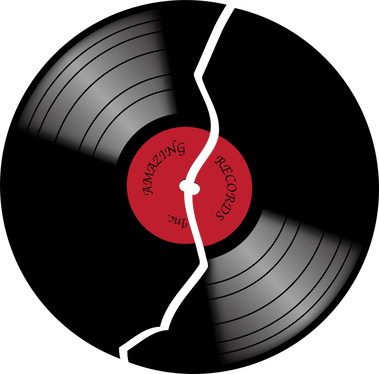 Apologies, Systems, and Mantras Running a small business there are times when it seems like everything is going wrong. Something broke, you under-delivered, you sent ads with errors, you made someone mad and they left a poor review. The list goes on! When we started Connection Publishing, we signed a contract with North Ogden City to create their magazine. I knew we needed advertising support to launch the publication, so I worked every day selling ads. John Watson Chevrolet was our first advertiser followed by Big-O in North Ogden. We continued to add many great advertisers. I worked morning until night to secure these advertisers. I would get home tired, and worn out. As we approached our first deadline, my wife expressed her concern about how the content was going to come together. I told her I wasn’t sure, but I knew I needed to sell $10,000 in advertising before we could launch, so I focused there. We crept closer and closer to our deadline, and I was still feverishly selling ads. I am so grateful for those initial advertisers who had to take a leap of faith that we would deliver something entirely new. I didn’t even have a sample I could show them. At one point, my beautiful wife realized if she didn’t step in to help, we wouldn’t have anything to put in the magazine I was selling ads for. She assumed when we dreamed up this idea together, that she would be a passive observer supporting me from the background. Well, she stepped into the role of content gathering, writing, and helping, and hasn’t been able to quit yet. (Maybe someday, babe! 🙂) Once we got going, we worked really hard to grow the business. More advertisers came, then more cities, and of course, more people started working for us. As each of those “mores” happened, things got crazy from time to time. Things fell through the cracks. We made errors. The bottlenecks would often be me. Too much of our company relied on me to answer all the questions. Because the decisions became too many, we would inevitably fail, and I would find myself apologizing to my customers about what happened. This is not a fun activity. But with the number of times I’ve had to do it, you would think it was one of my favorite hobbies. It is not! However, owning up to your mistakes actually helps people like you more and trust that you will take care of them when things happen. The first thing that had to change was our systems. Systems Two things happened as we grew. First, I knew each time there was a bottleneck or a recurring problem, I would have to create a system to smooth things out. Those systems included adding software to help us manage content and ads. We started with Trello, which was awesome, but eventually, we needed a more robust system. We knew this after we published an article in the wrong city for the third time. —for the third time. BIG MISTAKE! Not only did I need to apologize, I also had to find a solution. This is how we found our current system, called Podio, and it’s been amazing. Another problem: Our proofing process was painful. So many errors were found after the magazines were designed. It took our graphic designer hours and hours to fix the hundreds, and sometimes thousands, of errors found after she had laid out the pages. Those errors resulted in needing to redesign stuff. Again, not fun, and a waste of time. We often missed stuff because our proofing process was ineffective and clunky. We found out our new software had automation workflow features we could use to set up workflows to make some things happen automatically. We also decided to proofread everything in Word documents before they went to the designer. Then, when we proof copy a second time before going to print, we’d be left with only minor corrections to make. Now, when an article gets put into our system, we mark it “Ready to Proof”. That automatically gets sent to our proofreader who fixes what needs to be fixed. Once the proofreader is done, they mark it “Ready to Design”, which automatically notifies its designer that the article is ready. This one change saved hours of work and made our magazines much better. Look at your processes, and ask if there is anything you might do to make it smoother. If there is a technology that might make things easier, use it. At some point, you will not be able to determine all of the systems yourself. Empower the people who are part of the process to find the best answers. I sometimes find my own ideas are lacking, so I ask my people, who often come up with much better solutions. People who are part of the process should help make decisions and create systems. Repeating Mantras Over and Over As we added more people, we found the need to make sure they knew how things worked. We put together a folder in our system and started recording (video and written) activities that might need to be passed on to someone else. Things like, how to use the software, how to upload something, and our writing standards. At first, all these systems were designed by me. As we got bigger, some of our people have stepped into leadership roles. They have each come with their own set of ideas, and they have added to our systems when they seek to optimize their part of the organization. Caring about everything that happens at our company, I struggled to allow others to make decisions. I would often make those decisions through them. I would say, “You're in charge, but make sure to run everything through me.” I didn’t want to let anything slip. At one point, there were too many decisions to make, which meant I started to lose quality of life because I had my hand in over 200 pages of ads and content every month. In addition to the thousands of small business decisions, a business owner makes each day. That meant errors happened and I had to learn it can’t all happen through me. I had to start trusting people, but at the same time, I wanted to pass along my vision and standards. That was very important to me. Our company, and our reputation. As a leader, I have found repeating the overarching idea over and over is a crucial skill for passing on principles. Here are examples of some things I repeat often: "We Create Connection!" This is our WHY. From day one and even the name of our company was inspired by the idea that we wanted to help create more connection in our lives and in the lives of the customers we serve. When we are making decisions, I often repeat to my team, our goal is to create connection. Does this effort create more connection for our readers, our cities, or our advertisers? This is a core principle so I say it as often as I can. “We Are an On-Time Organization!” I have said this so many times that it must sound crazy to our team. It came about because we struggled to meet our deadlines many, many times. We had to make sure people knew we were serious when we said, “We can’t accept your information late; it just won’t be in the magazine.” We also couldn’t allow employees to miss deadlines. Everyone needed to know and believe that we are an "On-time organization." As our leaders realized how important this is, they have now become part of our “We are an on-time organization!” mantra. They have put policies in place to ensure that we are on time. This is important to us because we have windows at our printers we can’t miss. They print us an average of 12mm pages every month. Which takes time, so if we miss the window, they will move other jobs in our place and we get even further delayed. We also promise advertisers their ad will arrive at a certain time of the month. Missing that isn’t fair for the advertiser who paid for their ad to arrive on time. “Who Do You Serve?” I use this to focus our attention on being a customer-centric organization. I think some companies come up with policies with decisions based on how to best help themselves. I think this is backwards. So does Jeff Bezos. He’s known for saying Amazon is the world's most customer-centric organization. This challenges motivations. If you are thinking about a policy change because something isn’t working, the tendency will generally be to serve yourself first. When making changes, I ask my leaders to ask themselves: Who do you serve? Does this policy serve them?” It changes how people respond to challenges because these questions keep the focus on serving customers rather than just yourself. Sometimes painful decisions have to be made, but if you make sure you’re doing your best to serve your customer, they tend to stay your customer. “We Have Integrity!” This one is important when you make mistakes. The key is to always own up to your mistakes even when they’re not entirely your fault. The buck stops here. I am responsible, even when we make errors, but I don’t feel like it's an error. As the decider, I’m responsible. There are times when the client doesn’t realize an error occurred. For example, say an old ad runs, but the customer doesn’t notice. Or, we overcharge a client, but they don't bring it up. When this happens, it’s easy to listen to the little devil on your shoulder saying, “Don’t do anything, no one will know”. The problem is, you know. Your people know, too. They will realize you only have integrity when it is in your favor. If you are going to have integrity, it’s all the way, or not at all. There is no such thing as partial integrity. When you make errors, make it right. I spoke with a friend about this recently, and she told me her daycare drops the price when a child reaches a certain age. Her child reached that age several months prior, but they hadn’t discounted her pricing. She hadn’t noticed and didn’t really care. She was happy with their service. They came to her and told her of the error, and gave her an invoice credit. She told them not to worry about it, and just start the new pricing going forward. The daycare center said, “We don’t do things that way. We will refund you. Thank you for being a client.” That company values integrity. You need to repeat your beliefs and standards over and over again. Let people know what your values are, and they will make decisions with those values in mind. A leader needs to allow themselves to stubbornly repeat those values, even at the risk of sounding like a broken record. One of my leaders, Robert, always says, “Proof your Podio!” at the end of meetings because he’s all too often the recipient of an unreadable post in our software, which makes him have to chase down the poster to clarify what should happen with the article or ad. This wastes his time because it could have been avoided if the poster had simply filled in the info properly. “Proof your Podio!” “What’s Next?” I learned this one when I was managing a direct sales team selling Cutco. When someone would call to check in, I would ask them what’s next. It keeps their thoughts on moving forward. This is a great one for sales people. It just gets them thinking about what is next. "Your Brain Listens to Your Mouth" I typically use this one with my kids. They say things that are degrading to themselves, or have super negative talk. I always remind them, "Your brain listens to your mouth!" I also have to use this one on the golf course, cause I definitely talk negatively to myself when I am playing terrible. I have started telling myself, I am only allowed to complain about my golf in proportion to the amount I practice, which is admittedly not much. Talk kindly to yourself because your brain does listen and it will believe what you say. "You Can’t Get Better Until You Start Somewhere!" This is one more thing I often repeat, even my kids hear this one. “You can’t get better until you start somewhere,” I say it to family, friends, and employees. You have to allow people to make mistakes. You can have limits on how many mistakes you can put up with, but when my people make errors, I don’t blame them. I blame my own training and leadership. I find people want to do well; they want to fulfill their responsibilities with excellence. As long as they are clear on expectations and goals, and with an understanding of your business principles, they will fulfill their responsibilities with pride. Most of the time, there are exceptions, but I find those exceptions to be rare. They must be confident you will back them up when they make an error and know that you will correct them with kindness when they mess up. Another one of my leaders told me when she first came to the company that I was direct but kind. I am not afraid to tell people when something is off or needs to change, but I try to do so kindly and with respect for the person I am talking to. I give them leeway because I need it too. Plus, they must start somewhere, or they can’t get better. Today’s post was a departure from my normal marketing-focused ones, but I wanted to talk about things I’ve experienced that can hamper your marketing efforts. Things can happen even if you have an awesome marketing plan executed by an awesome marketing team. You can still lose out on business without good systems and values. It’s tough running a small business, but leadership is a skill that can be learned and taught. This is something you’ll find yourself working on for the rest of your life, I know I am still working on mine. I hope these insights help your small business thrive. Let us know if we can help, because we know you are WHO WE SERVE!  Last week I talked about SEO, and how it can make you available when and where your target audience needs you most. The goal of SEO is to let Google and other search engines know that you are who you say you are, and that you will give the answer the searcher is looking for. Search engines look at lots of factors like proximity, relevance, and authority. Today, I am going to write about a shortcut that can get you there faster. For most local businesses, this is the very first place you should start. You should be considering a layered, or omni-channel marketing strategy—but it can get costly. So, if you are a traditional business with competitors in your local market, you can get results quickly by using Paid Search Advertising. Sometimes called PPC, SEM, or as I call it, Paid Search. Two Advertising Approaches: Active Search vs Passive Discovery Active Search There are two ways people will come across your brand. The first is through active search. In the days of phone books, we would open the phone book and look alphabetically for businesses. For me, that was usually pizza delivery. Today, that type of lookup is primarily done on Google and other search engines. This is why I call these types of customers Low Hanging Fruit. This group knows what they want, and they are actively looking for an answer or solution. You want to make sure you show up when they are looking. SEO is a good way to be near the top of search results organically—meaning not paid, but it still usually costs money to get it done right. It’s important, but results can take a while. The Shortcut is to purchase search engine ads to ensure you show up at the top, or near it, at least some of the time. You can buy ads with Google to make sure you are found when someone is searching. Done properly, you can see results almost immediately. Passive Discovery When someone isn’t aware of your company or product, you need to help them discover you. This is where other forms of advertising come in handy. Social media, video ads, and magazine ads are all ways you can help people learn about products that they may not have searched for because maybe they didn’t realize it existed. This is called passive discovery, and it’s also where your creativity can be most valuable. The better you are at capturing attention quickly with your ads, the more effective they will be. A good example of this is Poo-Pourri. I don’t think anyone knew they might want to mask the smell of going to the bathroom until Poo-Pourri was invented, and then most of us knew we wanted it. “Do Not Go In There!” is now a thing of the past with this clever product. Their creative ads took the world by storm. I encourage you to test which would be the best way to get people to know about your product or service. One way is to analyze the traffic happening in your market. Use that as a guide for determining whether Paid Search (PPC) is worth your investment. Conduct a Keyword and Traffic analysis, or have your marketing person help you. We are great at figuring these things out, just let me know if you would like a free assessment. If you have something unique or slightly off from what the mainstream is doing, you should focus on passive discovery types of advertising. In another example, as you may already know, I own a RoofMaxx Dealership with my son who runs it. It is a great business in a very competitive market. Roofing companies are a dime a dozen in almost every market. Roof-related searches are big in most markets, and many roofing companies are spending thousands of dollars to show up on top. Because Roof Maxx is a unique product that can be sprayed on old roofs to make them last longer, we want to be discovered by people who are concerned about aging roofs. However, if we show up when people are searching for replacement options, it is often too late. If a roof is too far gone, it won’t allow Roof Maxx to work properly. This means we would pay big bucks to show up at the wrong time. Instead, we need to help people discover our spray-on treatment before it is too late. This is why this product falls into the passive discovery category. Therefore, we use print magazine ads, online videos, and social media ads to help our customers discover who we are. Now that you understand these two different approaches to advertising, this next section will show you how to take the shortcut that will make sure you show up at the top of search results when people are actively searching for you. Tips for Running a Successful Paid Search or PPC Campaign Paid Search or Pay-per-click (PPC) advertising can be an incredibly effective way to drive targeted traffic to your website, and increase your online visibility. So, first things first, make sure your website operates well. Be sure it is designed to capture a potential customer’s information, so you can capture that lead. This is massively important. If your site isn’t working properly, let’s fix it first. Assuming your website is good, let’s go over how to run a successful PPC campaign. It requires more than just setting up a few ads, and waiting for the clicks to roll in.
Second, define your WHY. Why do customers like you? What do you do that is uniquely amazing? Knowing that makes your content creation so much easier. Who are your ideal customers? What are their pain points and challenges? What motivates them to make a purchase? Use this information to create ad copy and landing pages that speak directly to your target audience. Thirdly, set your campaign goals. What do you want to achieve with your campaign? Are you looking to increase brand awareness, generate leads, or drive sales? 2. Choose the Right Keywords Choosing the right keywords is vital. The right keywords are key to the success of your PPC campaign. Conduct keyword research to identify the terms and phrases being searched for by your target audience. Use keyword research tools to identify high-volume, low-competition keywords to help you reach your target audience. Again, if you need help with this research, it is something we do really well. Once you’ve identified your keywords, organize them into ad groups based on their relevance to your products or services. This will help you create targeted ads that are more likely to convert because they will be delivered to the right people, at the right time. 3. Nail the Creative Your ads should be compelling, relevant, and highly targeted to your audience. Remember you have about 3 seconds to capture a viewer’s attention. Use your target audience and keyword research to create ads that speak directly to your potential customers. Use attention-grabbing headlines and titles, compelling ad copy, and strong calls to action to encourage clicks and conversions. Use this link full of awesome words you can use to capture emotion in your titles. Make sure your landing pages are highly relevant to your ads. Your landing pages should provide a seamless user experience that matches the messaging and branding of your ads. Don’t just send people to your main website hoping they find what they were looking for. Customize landing pages and give them what they want as conveniently as possible. 4. Monitor and Optimize Your Campaign Once your campaign is up and running, it’s important to monitor and optimize your performance. Use the data provided by your PPC platform to track your performance, identify areas for improvement, and adjust your strategy as needed. Google will even give you optimization suggestions. Use them if they make sense. Otherwise, look at what’s happening in the market. Eliminate Keywords that don’t, or shouldn’t, apply. Add new ones suggested by the system that might apply to you. To optimize your campaign for maximum results, test different ad copy, landing pages, and targeting options. Use this type of A/B testing to test different ad variations and landing pages to see what works best for your audience. A/B testing is simply using two versions of an ad, image, video, title, or some different variable and measuring which version works best. I recently ran two ads on Facebook for the live seminars I offer. I was surprised to see which ad performed better. I assumed the video would do best. Actually, the click-throughs were higher on the static image, not the video however, I did get one more share of the video. Here are the different ads. Which one would grab your attention? 5. Focus on Quality Score
Quality Score is a metric PPC platforms use to evaluate the quality and relevance of your ads and landing pages. The higher your Quality Score, the lower your cost-per-click (CPC), resulting in higher ad rank. It is worth the extra effort to get things right, so your ad spend will be most effective. To improve your Quality Score, focus on creating highly relevant ads and landing pages that provide a great user experience. Make sure your landing pages load quickly, are mobile-friendly, and provide high-quality content that matches the messaging of your ads. Running a successful PPC campaign requires careful planning, research, and optimization. By defining your WHO, WHY, and goals, choosing the right keywords, creating compelling ads with killer headlines or titles, monitoring your performance, and adjusting as you go, you can achieve your marketing goals and drive targeted traffic to your website. When done right, marketing is an investment, not an expense. There are people looking for you. We can help them find you with the right tools. Let us know if you would like to discuss driving more traffic your way. As always, we are here to help. Book a call here, if you want to get into the specifics or just want some advice. We are happy to help.  Learn how to outrank your competitors and show up when your potential customers need you most—when they are looking for you. If you were to get lost in the woods and come across a fruit-bearing tree, you would be so excited to find food. Since you are likely starving, you would likely immediately start picking fruit and eating. Would you climb to the top of the tree and try for the fruit hanging far above the path, or would you start with those delicious fruits hanging from the bottom branches which are easily accessible? I would start with the easiest first. Using SEO and SEM are the marketing equivalent of capturing the easiest-to-get business first. There are people searching for your product or service right now. If you don’t show up when they are looking for you, they will go to your competitors. It depends on your business as to how many people are looking for you on search engines, but it could be a significant number. Even if it is only a few, you need to show up where people search, when they are searching. There are two ways to do this. The first is SEO which is covered in this blog post today, and the second is SEM (Search Engine Management) which will be covered next month. Both work but think of SEO as the long-term play where SEM is quicker and can generate leads as soon as tomorrow. We offer both at Connection Media Co. Let us know if you need more leads. I have had 3 clients recently tell me that our paid search efforts are their number 1 source of leads. This is important, don’t underestimate how this could help your business. Search Engine Optimization or SEO in simple terms, is convincing Google or other search engines that you are relevant to the person conducting the search. Google understands its role is to give us what we want when we search and that we are happy with what we find so we come back and ask them again next time. If I was looking for a mortgage and it brought up a loan officer in Colorado, I wouldn’t trust Google results very much. Again, Google wants to give us what we want, so we trust them and continue to use them. For local SEO, search engines look at a lot of factors, but here are some of the primary factors. #1 Proximity-- Are you located near where the person is searching? Map apps on our phones are becoming the number one search engine for local searches. People aren’t going to websites anymore, they are just going to the map, searching for what they want and either clicking the phone number or clicking for directions. This makes managing Google google and Apple Maps of the utmost importance. That is why we added that specific product to our lineup last year because we wanted to meet customers where they are looking. Let us know if you want help with maps. #2 Authority--Do you actually do what someone is looking for? Are you trusted in your industry? Does your website contain proof of your expertise? One of the best ways to do this is by blogging about your expertise, and by understanding and using keywords to make sure search engines like Google and Bing can see that you are an authority in the industry. We can also help you get consistent blogging information on your site. We have 5 on-staff writers who are excellent at this. #3 Relevance--Do people get what they were after when they do find you? This is why when many people “bounce” or immediately leave your website it can hurt your SEO. It tells the search engine that they didn’t find what they were looking for on your site. They are also looking for new content. If your content is 10 years old, they don’t know if you are even still in business, or if your site is just still hanging around. #4 Technically Correct--There are some things that Google asks us to do to make sure your website will work well and feed their engines’ information well. Here are some examples of their requirements.
Maps SEO is a little different. This requires some of the same efforts, but it is also heavily tied to your Google My Business profile and category selections. Maps don’t use keywords, they use broader categories and are heavily influenced by reviews. We can help with this, too. With either of these approaches, you must make the effort continually. If you don’t, you will be impacted by competitors who are making more effort than you are. You might rank well right now, and then two to three competitors come in and do a better job of showing their relevance, and suddenly you are outranked. Making this an ongoing investment is a wise choice. Ranking well in local search results will attract nearby customers. Your NAP (Name, Address, Phone Number) must be consistent. Consistent NAP data across the web boost local search rankings. This means not only on your site, but also directories, linking websites, and anywhere else you might be listed. Consistency is key. Reputation Management is also crucial to online success. What are people saying about you? Again, Google wants people to get what they are looking for, so they will weigh the sites and listings of companies that treat their customers well. There are many solutions out there to help with reputation management, and we can also help you here. The best piece of advice I have for you with regards to your reputation is to answer negative feedback. When you messed up, admit it, apologize, and tell the person, publicly, how you are going to do better going forward. When you get incorrect or unjustified negative feedback, don’t get into an argument. Just say you’re sorry they had a bad experience, and that you are going to adjust something or simply that you are aware of the situation. No one expects you to be perfect. They want to know that you care though. Never let a bad review just hang out there with no response. Say something, and keep it civil. If they are combative, be the bigger person. Keep calm and type with a smile. Backlinking: Backlinks are just outside websites that link back to your website. Here is why those links are important as generated by ChatGPT.
Media companies have large audiences. If you can get media – free or paid media spotlights on TV, Radio, Blogs, Podcasts, Newspapers, and Magazines—all are great sources of media coverage. Linking that coverage back to your website, or social media, also adds a ton of credibility to your site and you. Often media coverage can also be a powerful marketing tool that is perceived as content, not just advertising. When I have spots on TV it is usually my use of the piece afterward that is more valuable than the piece itself. It shows relevancy and personalizes me as a business person. Plus, it only shows up in the media once, if I repost it on my website and social media, it lives for a long time. It can influence a future customer even years down the road. This will also help your website’s SEO. Your social media can lead people to your website with the right strategy, further boosting your relevancy and traffic. When you have a business, I find you usually have time or money, not typically both. If you have time you can do these things on your own; if you have money, you can hire someone to do it for you. We would love to be your marketing company. We have so many great solutions and we are happy to talk about your goals and challenges. We'll do our best to help you rock and roll! Please forward this email to anyone you know who would benefit from learning about these ideas. You can subscribe here. |
AuthorRyan Spelts Archives
September 2023
Categories |


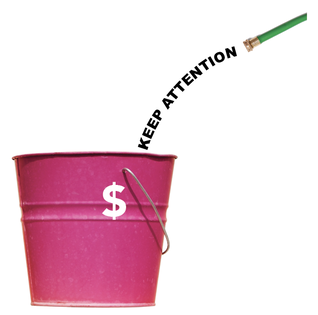

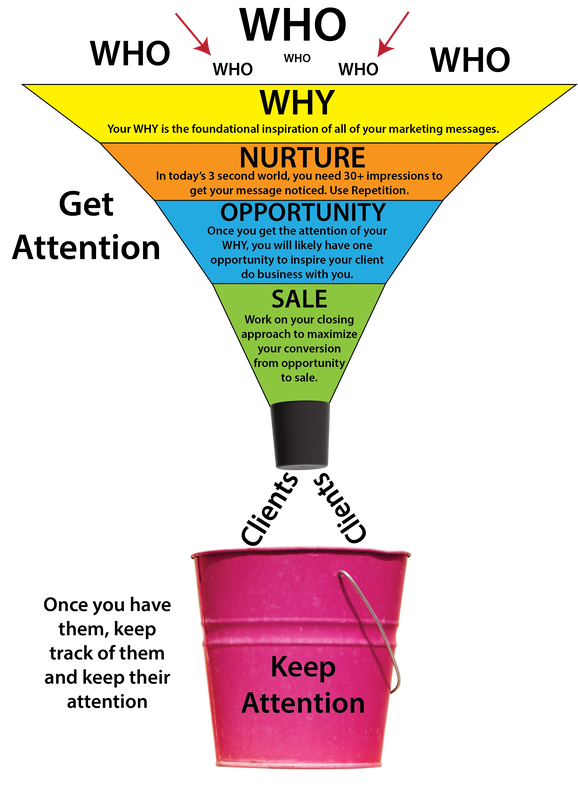

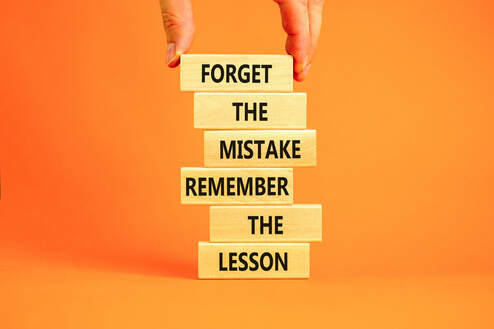
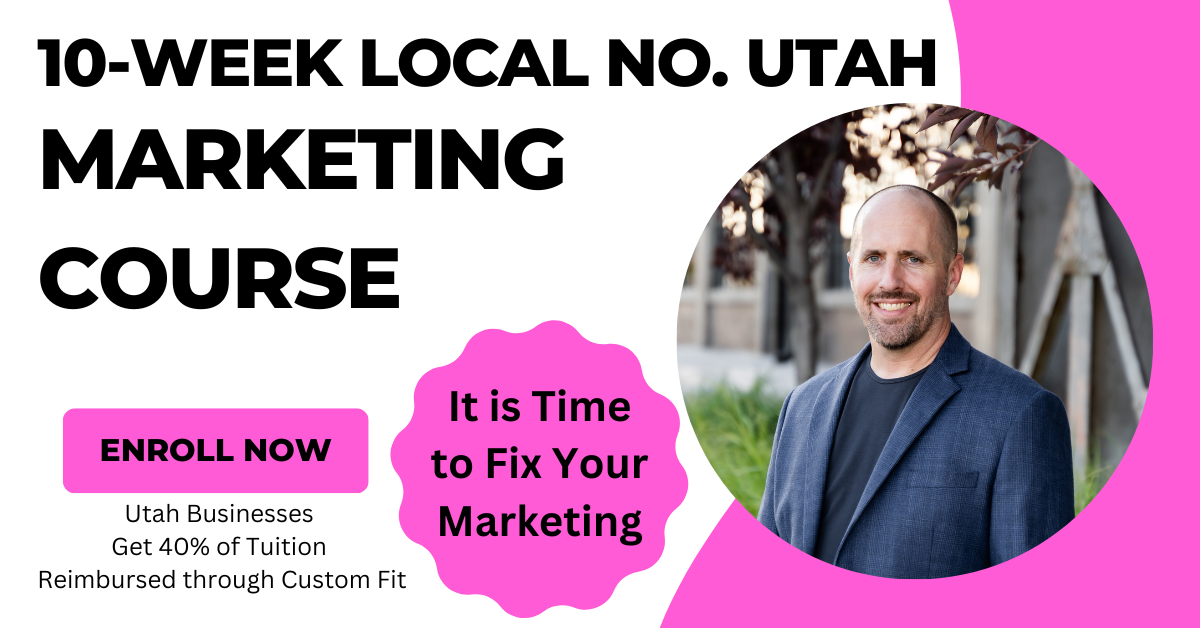

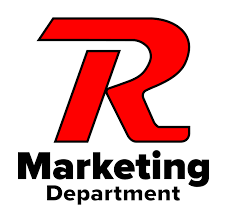
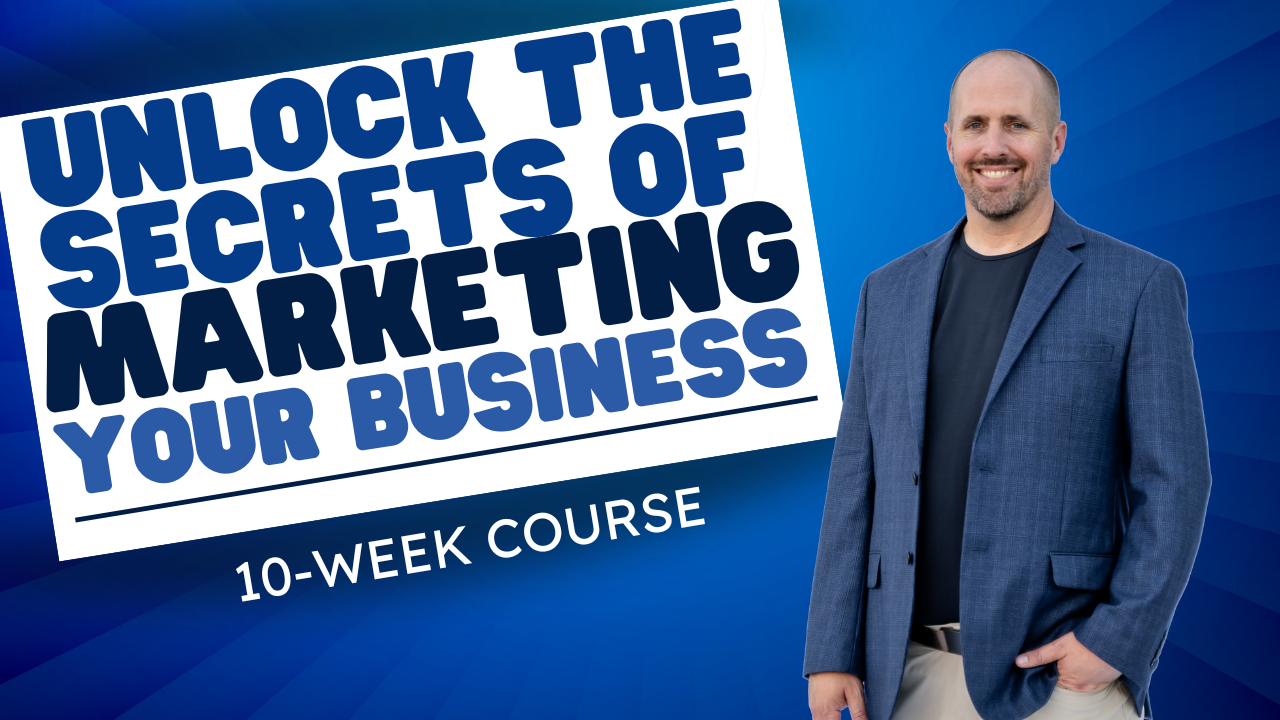
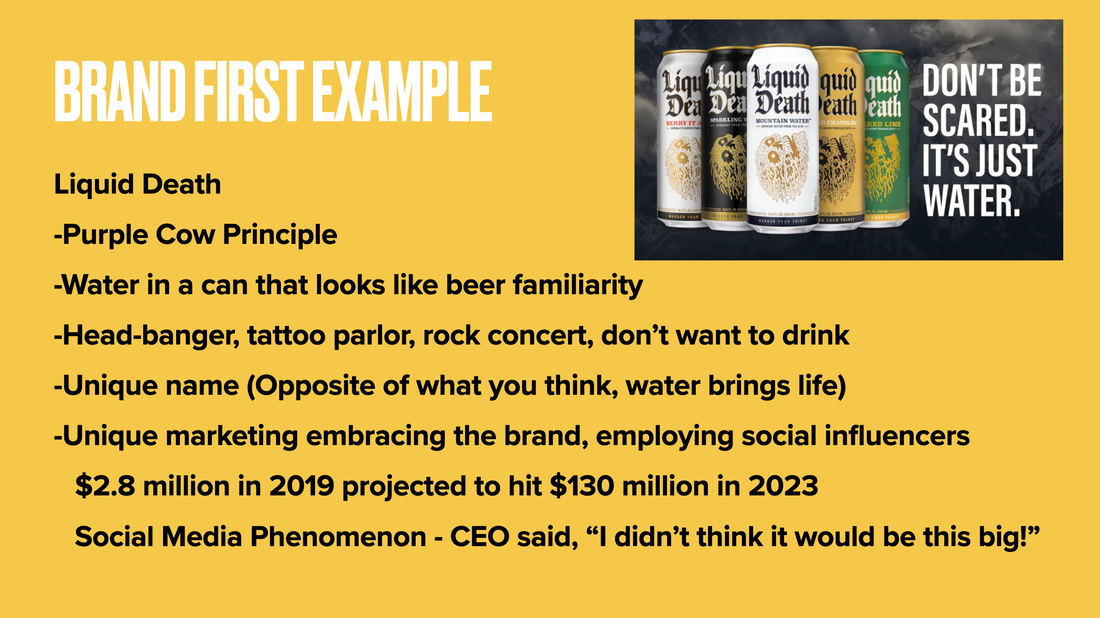
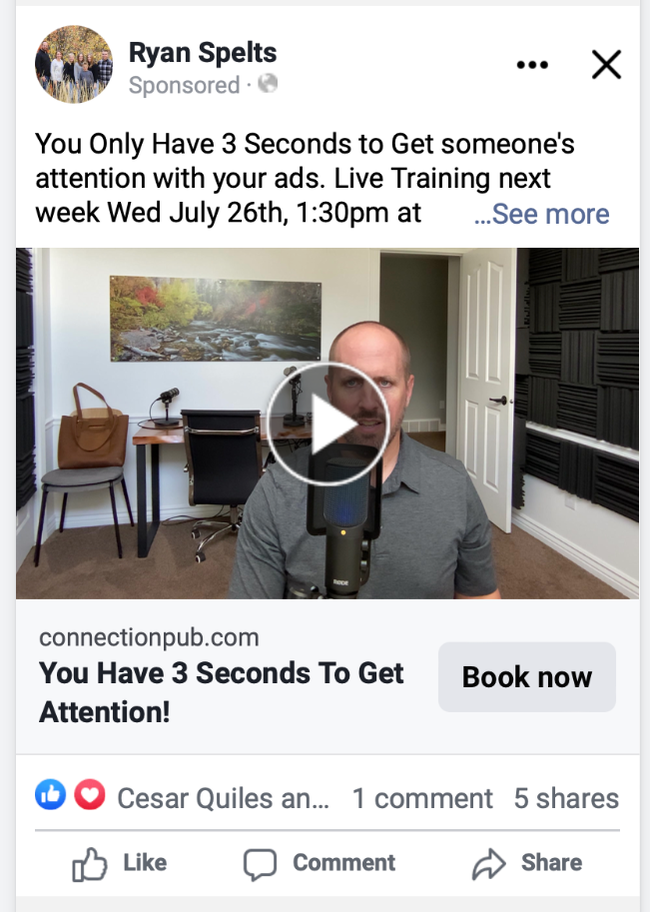
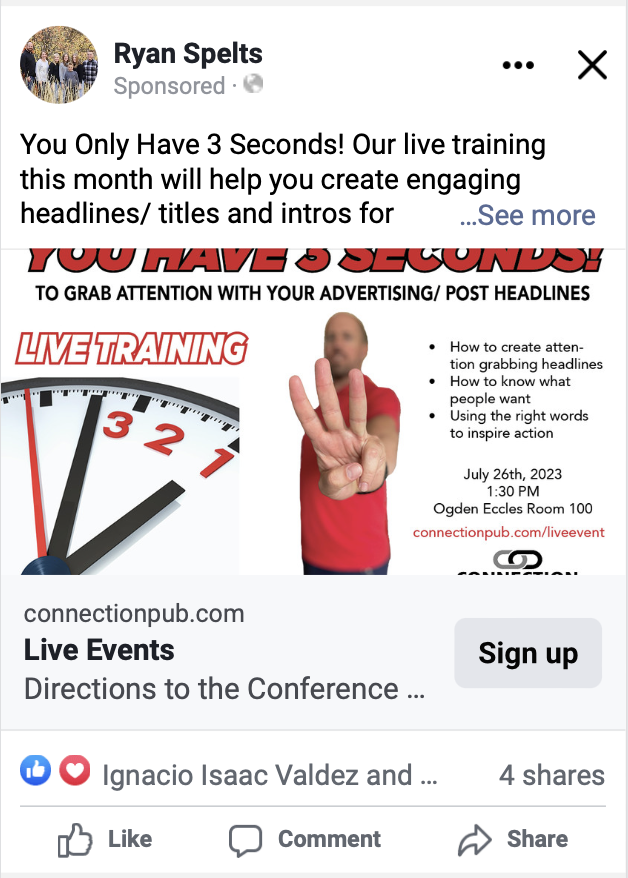
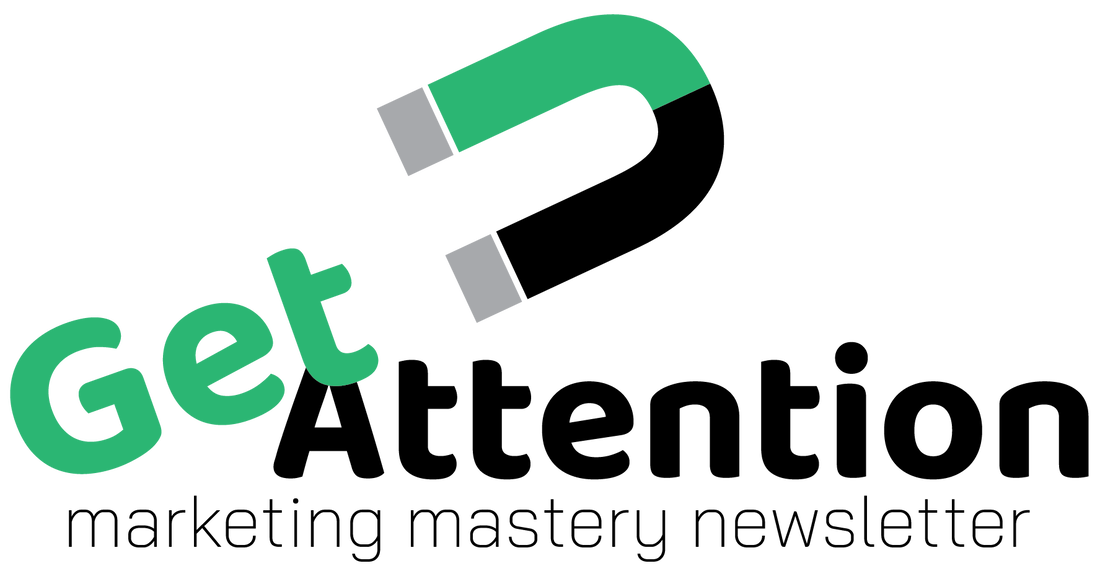
 RSS Feed
RSS Feed